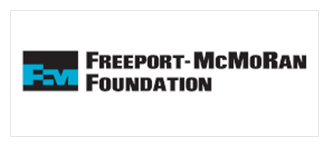 Poverty Report for Southern Arizona Cities, Towns, and Census-Designated Places
Poverty Report for Southern Arizona Cities, Towns, and Census-Designated Places
In 2021, the poverty rate varied substantially for communities located in Southern Arizona. Of the 41 Southern Arizona communities explored, 15 reported poverty rates below the U.S. rate of 12.6%, while 26 reported poverty rates in excess of the national average. The Corona de Tucson CDP posted the lowest rate at 2.2% while the city of South Tucson posted the highest at 35.6%.
Hereafter, when discussing multiple cities, towns, or census-designated places (CDP) the general term communities will be used. This article explores 41 of the largest communities within Cochise, Pima, Pinal, Greenlee, Graham, Santa Cruz, and Yuma counties. Due to the importance of mining in Greenlee County, we also include three nearby communities in New Mexico.
The 41 communities explored are broken into two graphs to illustrate the poverty rate. Figure 1a includes the top 20 communities ranked from lowest to highest. The remaining 21 communities are included in Figure 1b, also ranked lowest to highest. For example, the Ajo CDP had a poverty rate of 16.1% in 2021 which placed it 20th among the 41 communities or last in Figure 1a, while Bisbee city with a poverty rate of 16.3% was 21st among the 41 communities but placed first in Figure 1b.
In 2021, the Corona de Tucson CDP posted the lowest poverty rate at 2.2% followed by the Tanque Verde and Vail CDPs at 2.6% and 3.3%, respectively. Other communities with low poverty rates included the Catalina Foothills CDP (4.1%), and the town of Marana (5.6%).
Figure 1a: Poverty Rate (2021)
On the other hand, of the 26 communities with poverty rates exceeding the U.S. average, the city of South Tucson reported the highest rate at 35.6%. The cities of San Luis and Douglas, and the town of Hurley, all reported poverty rates between 23.9% and 25.1%, more than 10 percentage points lower than the city of South Tucson.
Figure 1b: Poverty Rate (2021)
Why is it important?
The poverty rate is an important indicator of financial distress among households. Families whose income is near or below the poverty level have difficulty accessing necessities such as housing, food, and healthcare. Local poverty rates are also important drivers of government decisions related to spending on programs such as affordable housing, free and reduced school lunches, and other forms of public assistance. Further, poverty rates have been linked to undesirable social outcomes, reduced regional homeownership rates, as well as a decreased likelihood of attending college.
How do we compare?
In 2021, the poverty rate for children under 18 was higher than the U.S. rate of 17.0% for 21 Southern Arizona communities. The town of Duncan reported the highest rate with 48.1% of children under 18 living in poverty. The city of South Tucson followed with a rate of 40.7%. Of the 41 communities, 12 posted poverty rates below the U.S. rate. Of those 12, the Catalina Foothills CDP posted the lowest rate at 2.5%, followed by the town of Marana at 6.0%.
The poverty rate for children under five was slightly higher across many Southern Arizona communities when compared to the rate for children under 18. This was consistent with the state of Arizona and the nation. The national poverty rate for children under five was 18.5%, while the state of Arizona posted a higher rate at 20.4%. Of the communities examined, the city of South Tucson posted the highest poverty rate for children under five at 72.3%, while the city of Maricopa posted the lowest at 7.2%.
The average poverty rate for the working-age population (18-64 years old) for all 41 communities was 15.7% in 2021. The highest poverty rate was posted by the city of South Tucson (36.7%), and the lowest by the Tanque Verde CDP (2.9%), for a difference of 33.8 percentage points. The city of Nogales posted the highest poverty rate (29.2%) for the population 65 years and older. Figure 2 illustrates the poverty rate by age.
Figure 2: Poverty Rate for Children (2021)
In general, men had a lower poverty rate than women in Southern Arizona. This is consistent with the U.S. and the state of Arizona. In the U.S., the poverty rate was 2.4 percentage points higher for women, a substantial difference. The town of Duncan posted the largest difference when comparing genders, with the poverty rate for women 9.5 percentage points higher. The town of Florence had the second-largest difference at 9.3 percentage points. On average, across the 41 communities, the poverty rate was 14.4% for males and 17.6% for females. Figure 3 explores the differences in poverty rates by gender.
Figure 3: Poverty Rate by Gender (2021)
In 2021, 33 communities reported poverty rates that were higher for the Hispanic and Latino population than for the white, non-Hispanic population. The town of Duncan reported a rate that was 45.1 percentage points higher for the Hispanic and Latino population. The city of Safford reported the smallest difference with a rate that was 0.1 percentage points higher for the Hispanic and Latino population. Many of the 41 communities reported differences resembling those of the U.S. and the state of Arizona. Figure 4 highlights the differences in poverty rates between the white, non-Hispanic population and the Hispanic and Latino population for the Southern Arizona communities.
Figure 4: Poverty Rate by Ethnicity (2021)
Families with children under five tend to have higher poverty rates, especially single-headed households when compared to the overall poverty rate for a region. The exception is married-couple households. The city of Nogales posted the highest poverty rate for families with children under five at 50.1%, which outpaced the state (13.9%) and the U.S. (13.1%). Numerous other communities in Southern Arizona also had a higher poverty rate when compared with Arizona and the U.S., including the Rio Rico CDP (41.8%) and the city of San Luis (34.2%). The city of Maricopa had the lowest rate at 8.8%. The poverty rate increased substantially in the communities, the state of Arizona, and the U.S. for female-headed households with children under five and no spouse present. The Casas Adobes CDP had the lowest poverty rate for female-headed households with children under five at 28.7%, followed by the city of Casa Grande (32.7%). The city of Sierra Vista posted the highest rate at 62.7% for female-headed households with children under five in 2021. To explore the vast differences among family types with children under 18 see Figure 5.
Figure 5: Poverty Rate by Family Type (2021)
What are the key trends?
The poverty rate decreased in 11 of the 41 communities between 2000 and 2015, and in 29 of the 41 communities between 2015 and 2021. Of the 11 communities that saw a decrease in poverty between 2000 and 2015, only seven (the towns of Clifton, Marana, and Thatcher and the cities of Douglas, Nogales, San Luis, and Maricopa) continued to decrease through 2021, whereas the remaining four saw an increase in poverty. During the 2015 to 2021 timeframe, the Ajo CDP posted the largest decline in the poverty rate falling from 33.6% to 16.1%. The city of Maricopa, located in Pinal County just south of the Phoenix city center, has experienced rapid population growth, significant increases in median household income, and the steepest decline in poverty (16.5 percentage points) among the 41 communities between 2000 and 2021.
The town of Miami reported a substantial increase in the poverty rate between 2015 and 2021 with a rise of over 6.3 percentage points. The poverty rate for the state of Arizona and the nation decreased by 4.7 percentage points and 2.9 percentage points, respectively, during this time period (2015-2021). Figure 6 illustrates the trend in poverty rates for Southern Arizona communities.
How is it measured?
All data provided for Southern Arizona communities, the state of Arizona, and the U.S. come from the U.S. Census Bureau’s American Community Survey (ACS). The ACS is a nationwide rolling-sample survey that produces one- and five-year estimates on demographic, social, housing, and economic measures. Data are only available as five-year estimates for populations smaller than 20,000. In order to compare the Southern Arizona communities with the state of Arizona and the U.S. all data provided in this analysis utilized five-year estimates.












